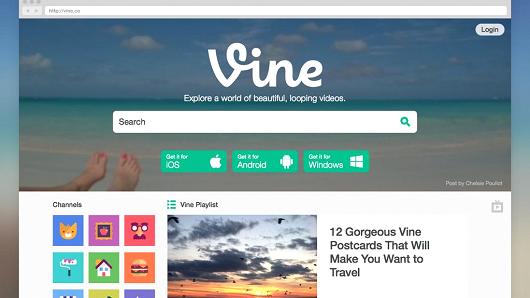
While many were up in arms online over Twitter’s decision to shut down short-form video platform Vine, few in the advertising industry will miss it. Advertising executives who spoke with CNBC said it was a dying platform that didn’t appeal to brands anymore.
“It hasn’t been something that has been important in our industry for over a year,” said Sarah Ware, CEO of influencer marketing technology platform Markerly. “It faded away and serves no purpose. I’m surprised it didn’t go sooner.”
Twitter announced when it reported its third-quarter earnings that it would be laying off 9 percent of its global workforce.The company said in a release that it intends “to fully invest in our highest priorities and are de-prioritizing certain initiatives and simplifying how we operate in other areas.” Part of the cuts included shutting down Vine. The company declined further comment.
Despite the posts about mourning the service, Ware said users had been abandoning Vine in large numbers. Out of a random sample of 54,000 Vine users and 2 million Vine videos, it found 48 percent of the users stopped posting as of Jan. 1, 2015. By Jan. 1, 2016, that number grew to 67 percent. Ware said most of the top 15,000 accounts hadn’t posted in a year or more. The company suspected that many of the users migrated to Instagram.
In addition to lower user numbers, advertisers had issues with the platform. With its 6-second clips, brands had a hard time justifying paying for product placement, Ware said. It was also difficult to measure the return on investment, she added.
Most of all the short videos limited creativity, Ware said. YouTube and Facebook allowed for longer clips, while companies could string together a narrative together with a collection of snaps on Snapchat. Meanwhile, those looking for short form video opportunities could use products like Instagram’s Boomerang (which had a larger number of users) or Snapchat. Vine’s just existed mostly on Vine, and it was difficult to connect one post to another, she said.
“Advertisers like telling a story, and you can’t do that on Vine,” Ware said.
Shutting down the service is a smarter decision that allows Twitter to focus on more promising ad products on Twitter itself and on Periscope, said Joseph Anthony, CEO of agency HERO Group.
“Twitter is having a hard time finding a buyer for Twitter, let alone Vine,” he said.
Vine did do an excellent job at creating its own network of stars at one point, but the problem is it hasn’t innovated since it launched, Anthony said. When it comes to recommending a balanced digital campaign, Anthony said his agency usually recommends placing content on Vine last among the major social platforms.
“They haven’t iterated the product fast enough to be competitive with short form video assets,” Anthony said. “Looped video sharing has been obsolete and redundant.”
There are Vine loyalists, Anthony admitted, but that doesn’t mean Vine will really be missed.
“If you shut down MySpace today, there would be a couple of people who would jump out,” he pointed out.
source”cnbc”



